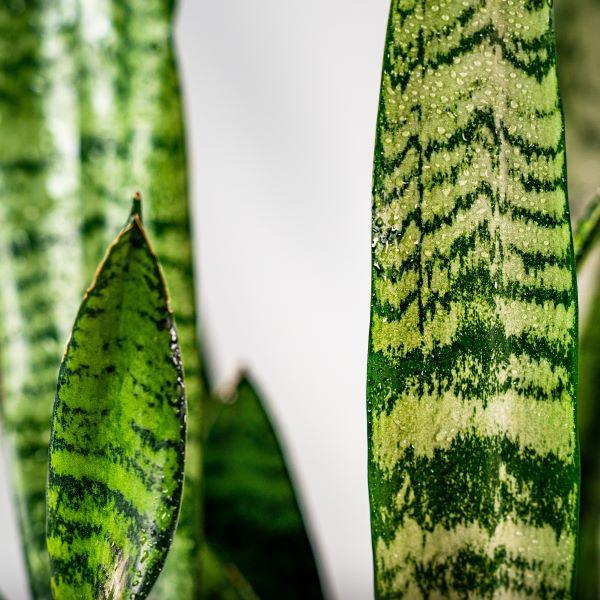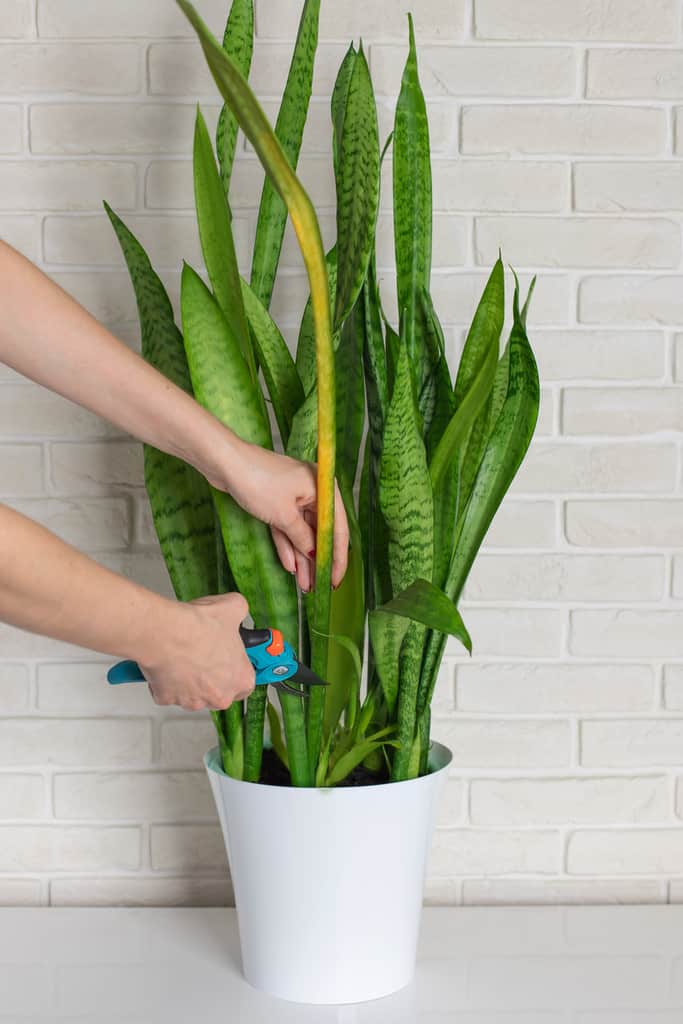Facts About Snake Plant Leaves Turning Yellow Uncovered
Wiki Article
8 Simple Techniques For Snake Plant Leaves Turning Yellow
Table of ContentsGetting My Snake Plant Leaves Turning Yellow To WorkThe Snake Plant Leaves Turning Yellow PDFsFacts About Snake Plant Leaves Turning Yellow UncoveredThe Snake Plant Leaves Turning Yellow StatementsThe smart Trick of Snake Plant Leaves Turning Yellow That Nobody is Talking AboutLittle Known Questions About Snake Plant Leaves Turning Yellow.

Ideally, you must include a liquid fertilizer to the plant's water. It is better to give snake plants inadequate plant food instead of way too much. Do not fertilize serpent plants in the wintertime. Repotting Apartment pots with large sizes are excellent for Sansevieria, as the plants create thick rhizomes that spread out flat just under the surface of the dirt.
This is only required when the plants are entirely rooted through, if the rhizomes press each other up out of the soil or grow over the edge of the pot. Some fallen leaves might topple away over the sides on tall houseplants as the root is not completely anchored in the soil.

7 Simple Techniques For Snake Plant Leaves Turning Yellow
One especially quite variant of the easy-care home plant is the fan snake plant (Sansevieria zeylanica). Propagating serpent plants The green-leaved serpent plant can be extremely quickly propagated in the spring or summer through cuttings approximately 1.Nonetheless, you must keep in mind when propagating the snake plant which reduced side belongs at the leading and which near the bottom! The cut surfaces need to be entrusted to completely dry in the air for about a week after reducing. Just then should the leafed items be grown in moist substrate. They promptly create little, rooted rhizomes in the semi-shade at 69.
Shorten the leaves of long-leafed selections by regarding half to ensure that the plant is steady in the pot. With rosette-shaped growing Sansevieria, the specific rosettes are thoroughly separated from each other to ensure that each one has a few roots. The items are grown independently in blossom pots. Illness and Parasites The serpent plant is an extremely durable plant also with moderate treatment and in sub-optimal conditions; it also forgives major care mistakes.
Brownish colored or limp fallen leaves are normally caused by origin rot, waterlogging or temperatures that are too reduced. The most frequent parasites on serpent plants are mealybugs.
Not known Factual Statements About Snake Plant Leaves Turning Yellow
Sansevieria, Mother-in-Law's Tongue, Viper's Bowstring Hemp. There are several types of Snake plant which all require the same care: Snake plant moonshine Snake plant Victoria Snake Plants can live in low light to brilliant, direct sun (Snake Plant Leaves Turning Yellow). They're the ideal plant to bring life to a dark area or edgeThroughout the winter months do not hesitate to just sprinkle your serpent plant when a month if the dirt is still moist after 2 weeks. Snake Plant kingdoms do not have any kind of specific humidity requirements yet they favor drier settings. Serpent Plants do not have any particular temperature level needs, however will suffer if subjected to temperature levels listed below 10C.
Its sluggish growth price makes it reasonably unusual in browse around here the trade. There are two virtually similar kinds, among which is'Nelsonii'.'Nelsonii 'propagates true to kind from fallen leave cuttings while the other form, additionally marketed as'Nelsonii', need to be circulated by rhizome department due to the fact that leaf cuttings yield S. trifasciata.
Gathering bed-grown sansevieria is a selective thinning process. Single rosettes of desired size are severed from the remaining clump by hand with a weeding knife or similar cutting device, and lifted from the bed. Fully efficient beds are harvested 5 to 6 times per year to avoid crowding of young plants which misshapes brand-new rosettes.
Excitement About Snake Plant Leaves Turning Yellow
Sandy field dirts utilized for ground beds should be modified with 15 to 20 percent peat integrated right into the upper 4 inches to enhance water holding and cation exchange capacity. The p, H of a lot of sandy ground beds in main Florida ranges in between 5. 5 and 6. 8. Study has shown that S.29 extra pound per plant. Nonvariegated plants are typically a lot more effective than variegated cultivars of the same varieties. Some nurseries grow tiny plants from fallen leave cuttings in either ground beds or increased benches - Snake Plant Leaves Turning Yellow. Fallen leave cuttings of nonvariegated cultivars are usually stuck in early spring and produce little plants in fall under shadehouse problems.
5 inches into a well drained but damp tool. Since the upper and basal end of cuttings drawn from the mid-section of taller kinds is tough to figure out visually, it is usually preferable to mark or scratch one end of the cuttings continually to assist in sticking. Cuttings stuck upside-down will certainly not create origins.
Snake Plant Leaves Turning Yellow Can Be Fun For Anyone
Origin and shoot growth occurs much more slowly at lower temperature levels; temperature levels listed below 60F should be avoided. Relying on cultivar, cutting dimension, area reference of fallen leave utilized, and its physical problems, leaf cuttings will usually generate 1 to 5 plantlets. Plantlets ought to be broken or cut from the fallen leave cutting when they get to the desired sized.
Ten to 12 fertilizer applications each year to stock beds under field problems or under structures will keep appropriate fertility, plant vigor, and top quality. Nitrogen is the most crucial component in many baby rooms in regards to limiting the price of plant growth. Supply beds ought to obtain 500 to 750 pounds per acre each of nitrogen (N) and potash (K2O).
Snake plants are a terrific enhancement to any home. However, if you have actually got one and you discover that the fallen leaves of your snake plant are splitting, do not stress! There are several things that might be creating this trouble, and we'll list them below. After identifying this hyperlink exactly how your serpent plant's fallen leaves are dividing (and hopefully avoiding them from doing so in the future), you'll have the ability to maintain your favored houseplant healthy and balanced for years.
Signs and symptoms consist of plants that don't get sufficient water or plants that are over-watered. Plants that don't obtain adequate water will have completely dry fallen leaves and stems, with large spaces in between the split locations of their leaves. Over-watered plants will certainly have soft and saggy stems, in addition to white areas on the bottom of the fallen leave.
Fascination About Snake Plant Leaves Turning Yellow
If your serpent plant's fallen leaves are breaking, it might be because of overwatering. When you water your snake plant, you intend to stay clear of soaking the dirt so it remains damp however not soaked. If you sprinkle frequently or excessive, after that the dirt can come to be as well moist and will certainly not soak up dampness as conveniently when sprinkled again.Report this wiki page